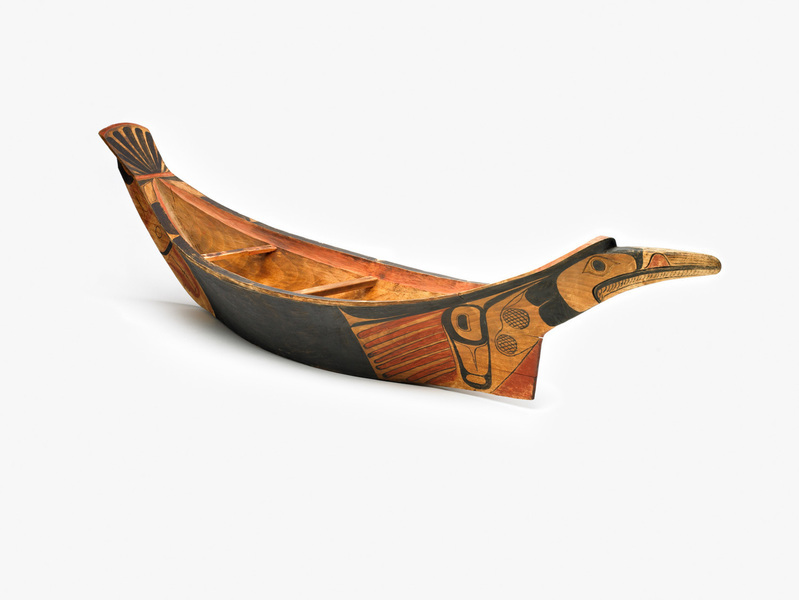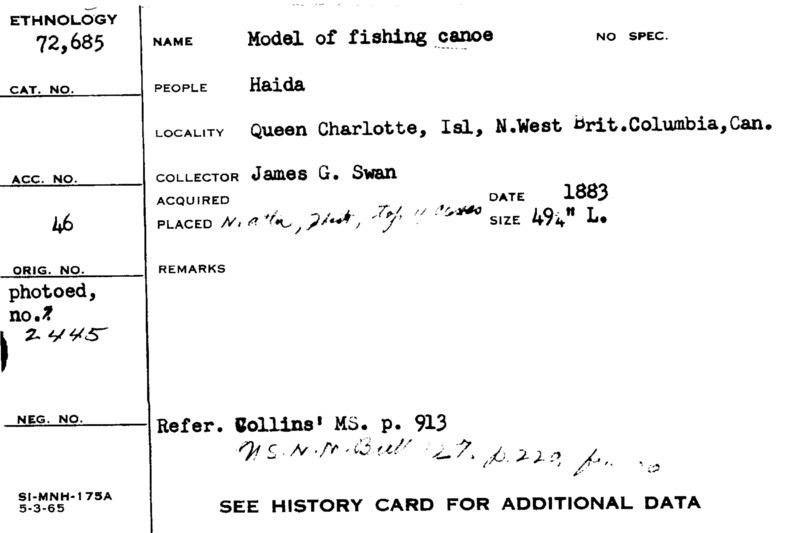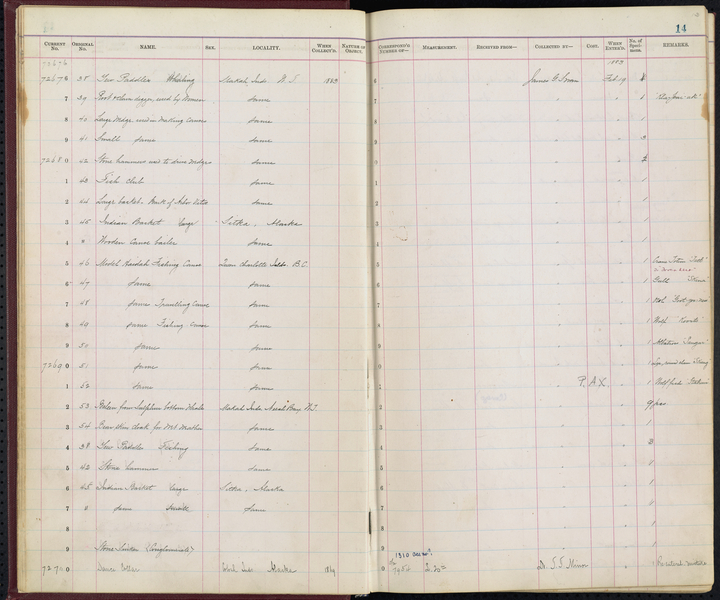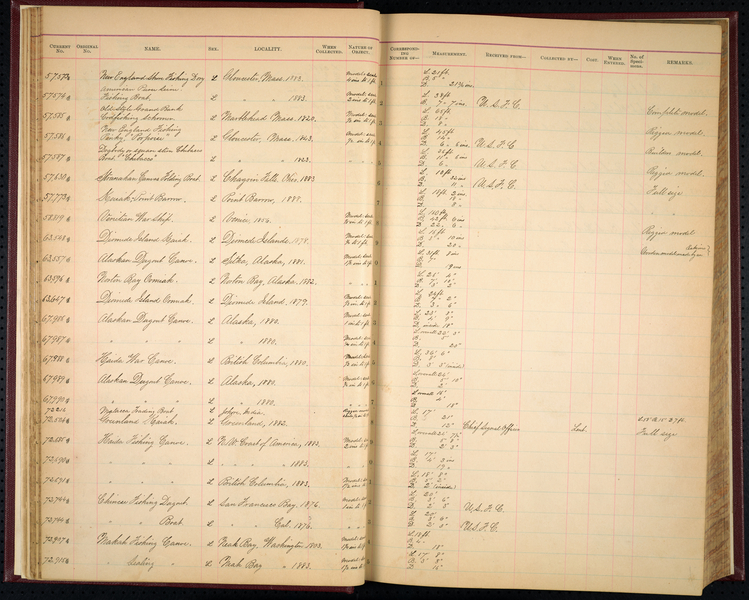Model Of Fishing Canoe Item Number: E72685-0 from the National Museum of Natural History




Notes
This object is on loan to the Anchorage Museum at Rasmuson Center, from 2010 through 2027.From card: "Refer. Collins' MS. p. 913. USNM Bull. 127, p. 220, fig. 66." The Collins MS. entry on this canoe model, referenced above, identifies it as being carved and painted to represent the totem of the "crane" or "Tatl", with the bow terminating in the carved beak of the bird, though Tatl may actually more correctly reference a loon?Source of the information below: Smithsonian Arctic Studies Center Alaska Native Collections: Sharing Knowledge website, by Aron Crowell, entry on this artifact http://alaska.si.edu/record.asp?id=603 , retrieved 6-24-2012: Canoe Model The Haida were famous for the red cedar canoes they traded to other Native peoples of southeastern Alaska and the northwest Canada, and Haida master builders were honored for their skill. Seven styles of canoe are historically known, including this type used for fishing. The bow is painted with a bird crest design. Builders cut down large cedar trees in spring and rough-shaped the logs in the forest, then towed the half-finished boats to the village for the final adze work. They boiled water inside to soften the hull, spread apart the sides, and inserted wooden thwarts used as seats.
Item History
- Made in British Columbia, Canada
- Collected by James G. Swan in British Columbia, Canada during 1883
- Received on February 12, 1883
What
- Name
- Model Of Fishing Canoe
- Identification Number
- E72685-0
- Type of Item
- canoe model
Who
- Culture
- Haida
- Field Collector
- James G. Swan
Where
- Holding Institution
- National Museum of Natural History
- Made in
- British Columbia, Canada
- Collected in
- British Columbia, Canada
When
- Collection Date
- during 1883
- Acquisition Date
- on February 12, 1883
Other
- Accession Number
- 012690